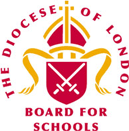Geography
Geography is a valued part of the curriculum. In EYFS Geography knowledge and skills are taught through Knowledge and Understanding of the world. In KS1 Geography is taught for half of the year, alternating with History. In KS2 Geography and History are taught every week. We recognise and seek to develop strong links between Humanities and Literacy, Art and Design, and Science to support children in making links across the curriculum.
Geography is important in school as it provides a means of exploring, appreciating and understanding of the world in which we live and how it has evolved. Geography explores the relationship between Earth and its people.
Geography stimulates curiosity and imagination. We can aim to build upon the child’s ‘Personal Geography’ by developing geographical skills, understanding and knowledge through studying places and themes.
“A high quality Geography education will inspire in pupils a curiosity and fascination about the world and its people that will remain with them for the rest of their lives.” (The 2014 Primary National Curriculum in England).
Organisation of Geography
By the end of KS1 all children will have undertaken geographical work which secures their knowledge and understanding of our locality; comparing and contrasting this to a seaside location, and a small island community (Galapagos). They will have secured key locational knowledge to ensure they can name and locate the continents, and oceans. They will understand climate differences in our World. They will be able to discuss where the UK is situated and contrast this with the human and physical geography of Kenya.
We have organised the KS2 curriculum into progressive units. These build up key knowledge and skills in significant areas of geography as the children progress through the school. We have also grouped specific units of work together within a year group to build on prior knowledge and encourage connections between areas of study.
Physical and Human Geography
In year 3 the children learn about biomes in general: where they are in the world, how they differ, and the impact this has on animals and people living there. This builds each subsequent year to study specific biomes (Rainforest and desert) followed by a human impact study in year 6 located in California. There are strong links between this area of learning and the science units on habitats.
The impact of water in the environment and how this shapes our land. Year 3 will learn about the key aspects of rivers and how they shape the land. In year 4 a case study of the Rhine develops this knowledge further. This develops further into coastal features and then oceans in year 6.
Landforms builds up across the school covering volcanoes, mountains and Earthquakes. In year 6 the focus is on natural resources and related to these landforms. This connects well to the human geography units around land use; agriculture, settlement, population and tourism.
Skill and Fieldwork
Throughout all units of geography teachers will provide opportunities for children to develop their geographical skills. Mapping, both using OS resources as well as sketches, plans and visual literacy skills. Children will answer enquiry questions and undertake local fieldwork to support their understanding of the world.
Vocabulary is a major component of the developing skills and is taught explicitly.

